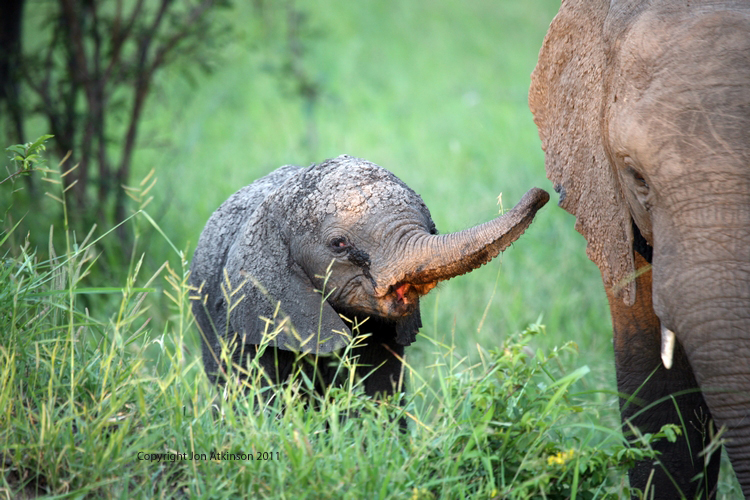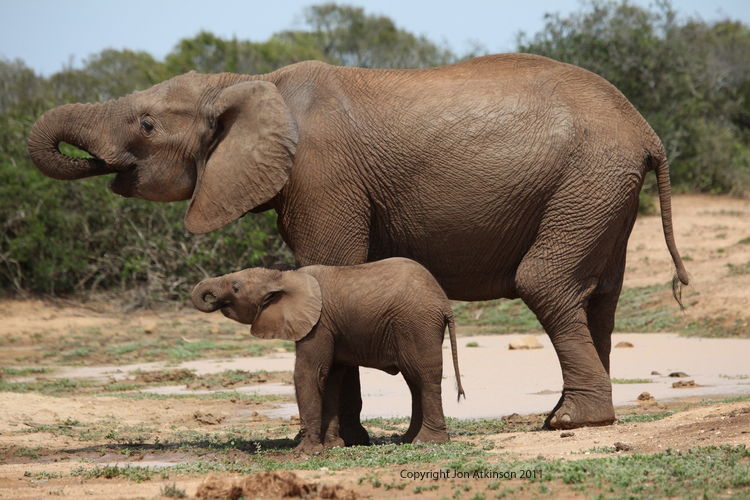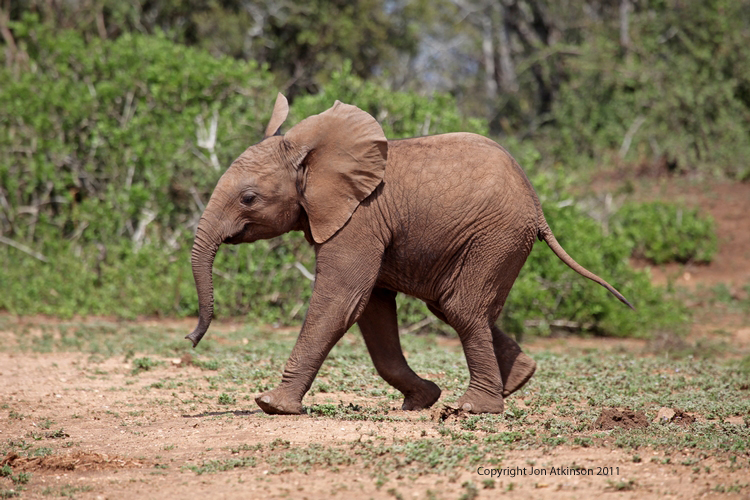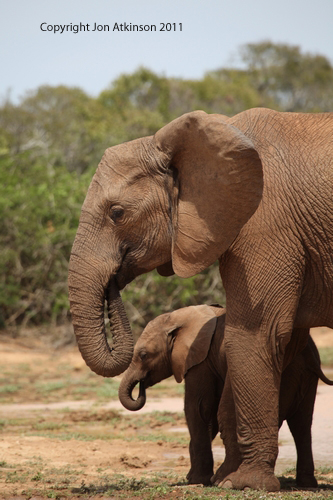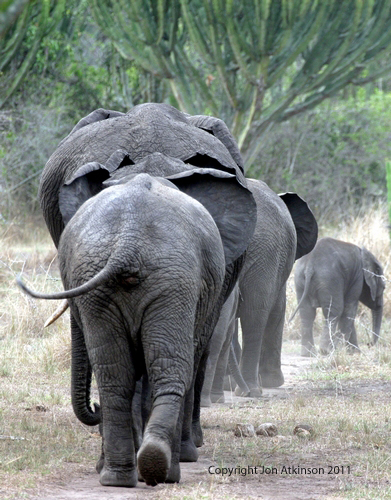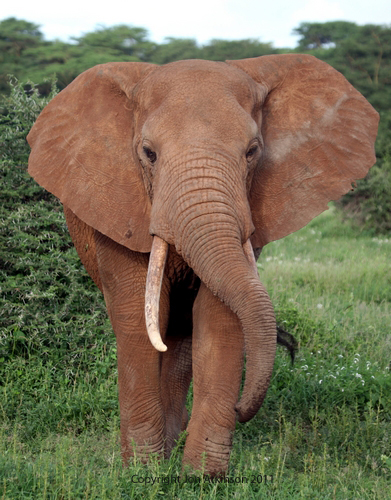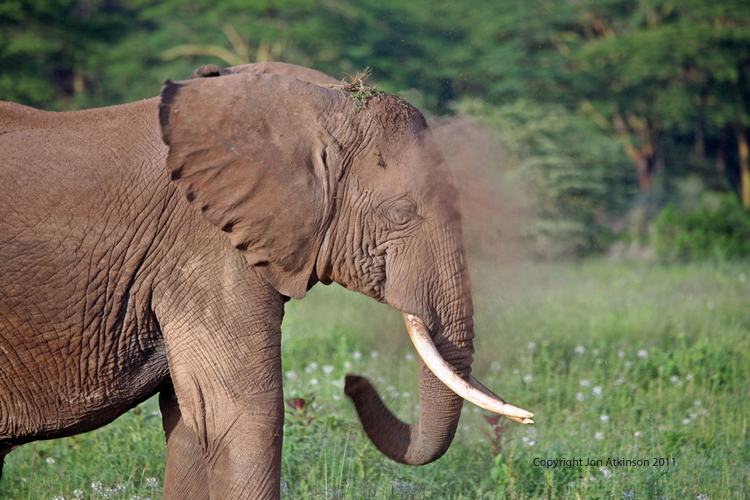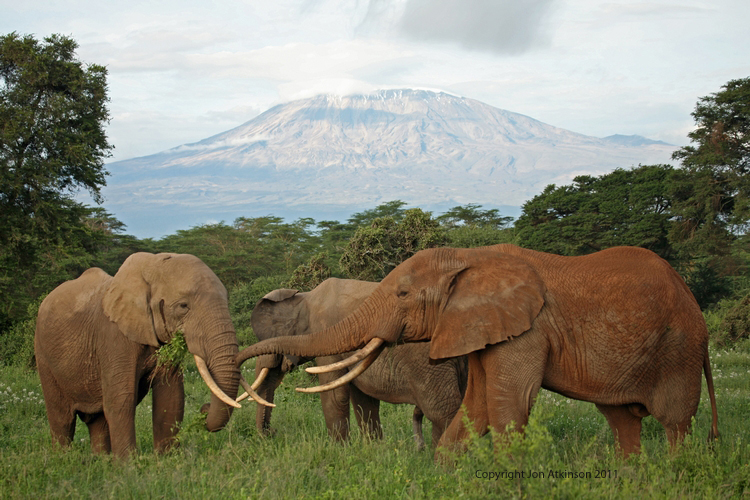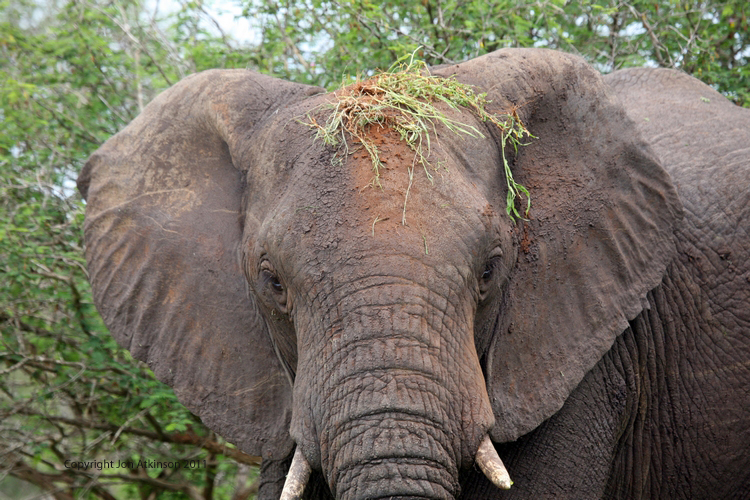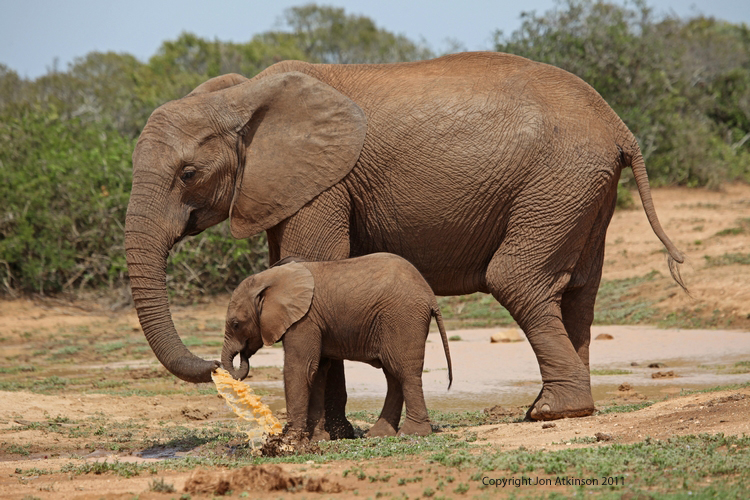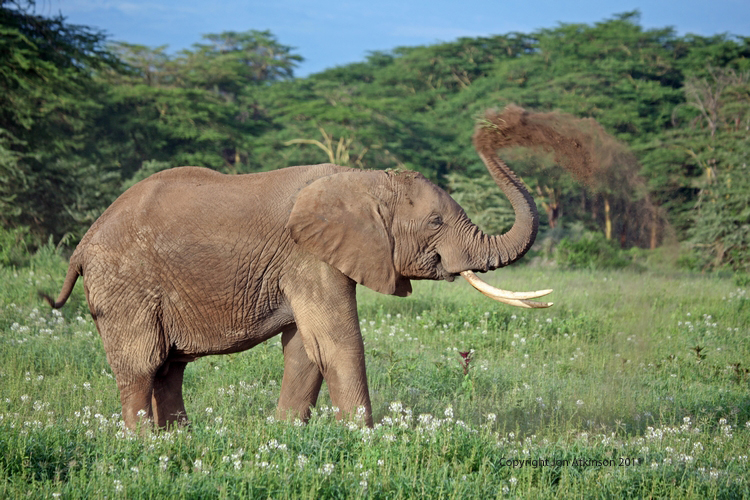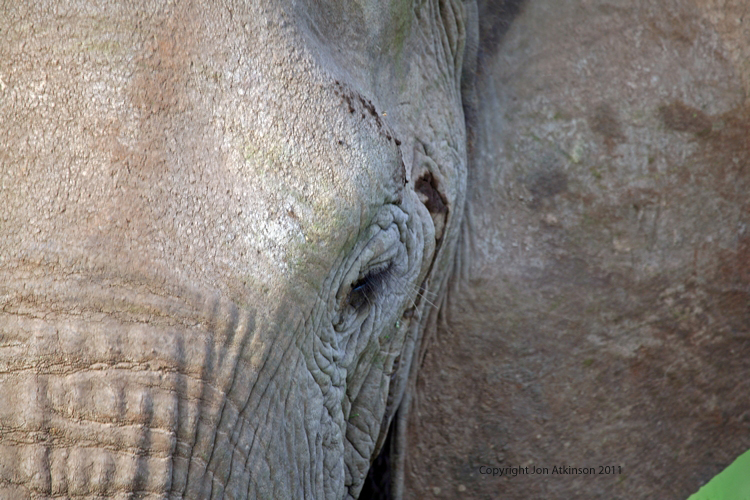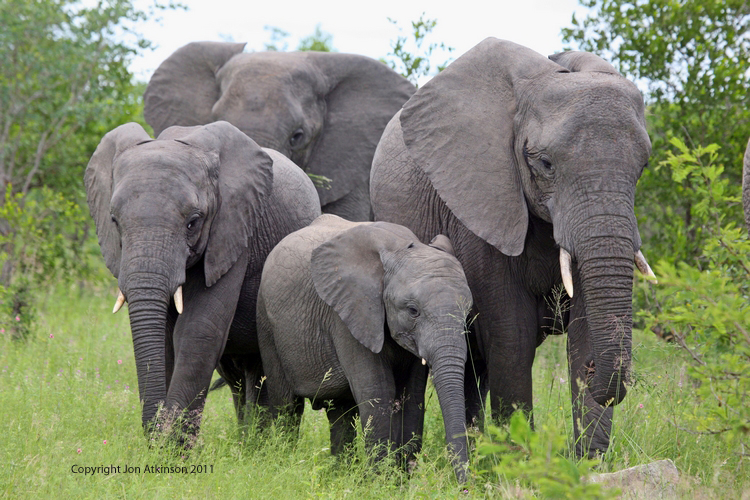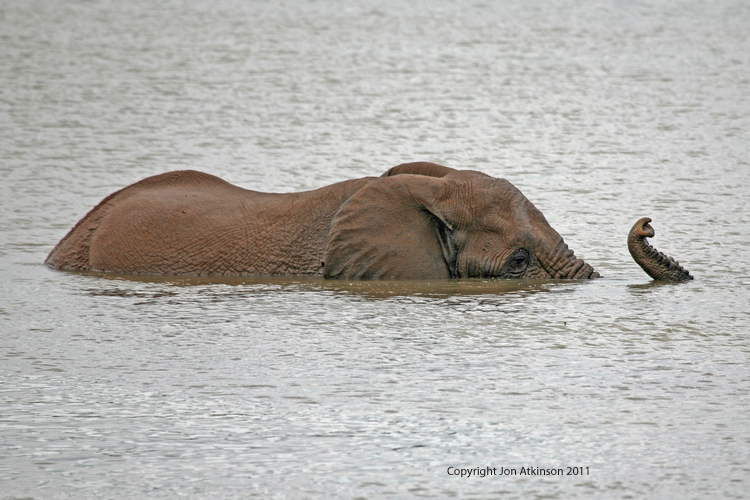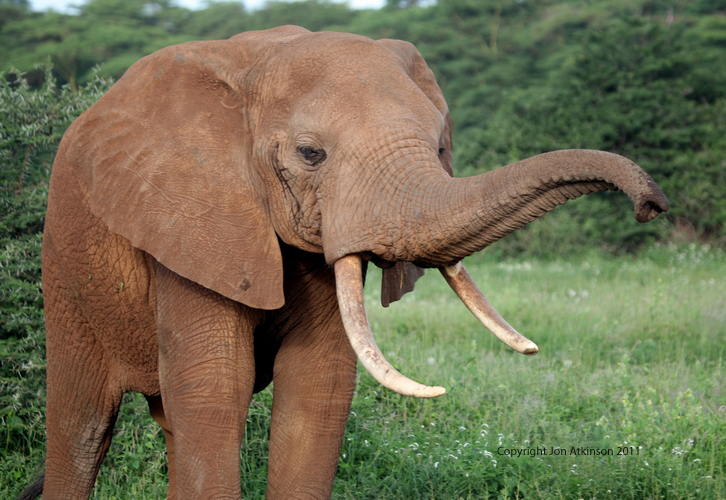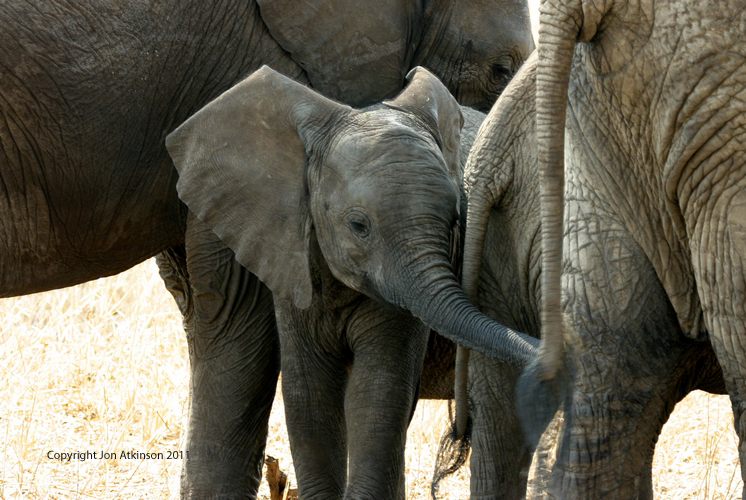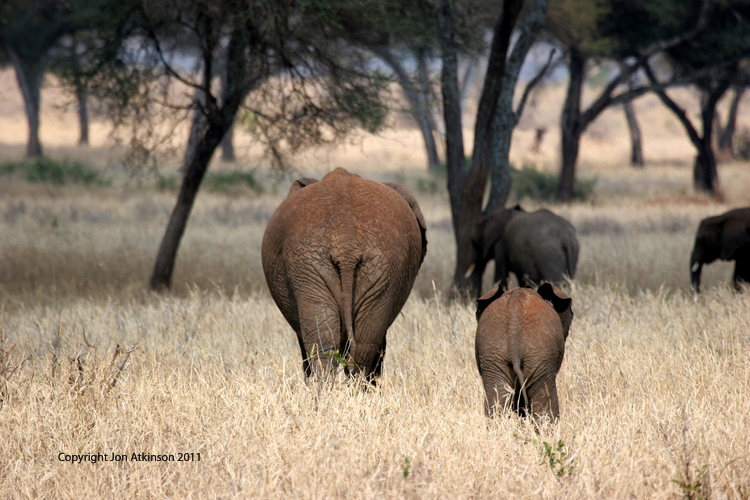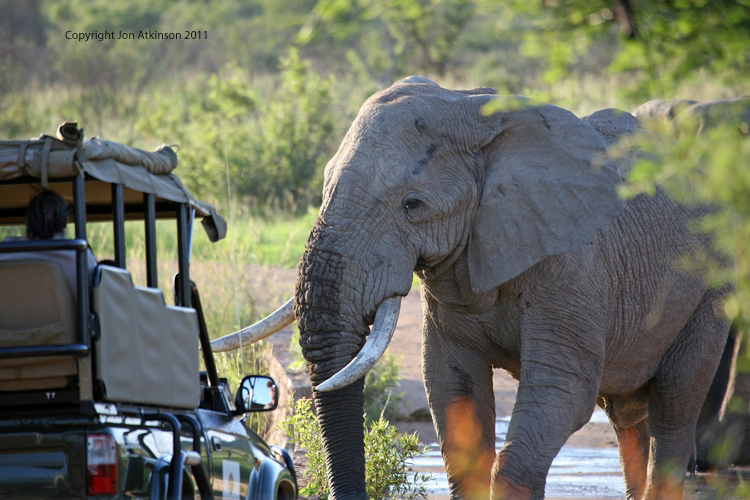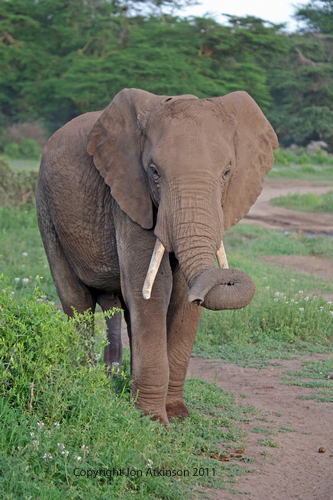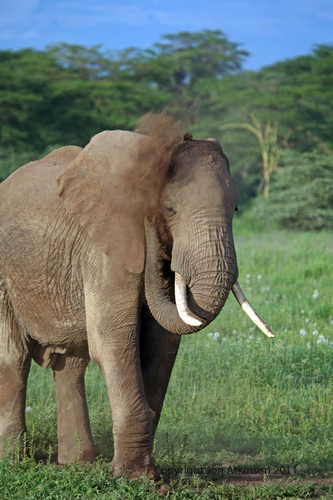ELEPHANT 1 - Elephants at dusk, Kruger N.P., South Africa: African elephants are the world's largest terrestrial animals. The trunk, an extension of the upper lip and nose, is used for communication and handling objects including food. |
ELEPHANT 2 - Elephants, Kruger N.P., South Africa: African elephants are bigger than Asian Elephants. Males stand 3.24.0 m (1013 ft) tall at the shoulder and weigh 4,7006,048 kg (10,00013,330 lb), while females stand 2.22.6 m (7.28.5 ft) tall and weigh 2,1603,232 kg (4,8007,130 lb). |
ELEPHANT 3 - Elephants, Kruger N.P., South Africa:Elephants have four molars; each weighs about 5 kg (11 lb) and measures about 30 cm (12 in) long. As the front pair wears down and drops out in pieces, the back pair shifts forward, and two new molars emerge in the back of the mouth. Elephants replace their teeth six times. |
ELEPHANT 4 - Elephants, Kruger N.P., South Africa: At about 40 to 60 years of age, the elephant no longer has teeth and will likely die of starvation, a common cause of death.
| ELEPHANT 5 - Elephants, Etosha National Park, Namibia: Their tusks are teeth; the second set of incisors become the tusks. They are used for digging for roots and stripping the bark off trees for food, for fighting each other during mating season, and for defending themselves against predators. |
ELEPHANT 6 - Elephant, Amboseli N.P., Kenya: The tusks weigh from 2345 kg (5199 lb) and can be from 1.52.4 m (58 ft) long. Unlike Asian elephants, both male and female African elephants have tusks.
|
ELEPHANT 8 - Elephants with Mount Kilimanjaro in the Background: African elephant societies are arranged around family units. Each family unit is made up of around ten closely related females and their calves and is led by an older female known as the matriarch. |
ELEPHANT 9 - Elephant, Kruger N.P., South Africa: While feeding, elephants use their trunks to pluck at leaves and their tusks to tear at branches, which can cause enormous damage to foliage. A herd may deplete an area of foliage depriving other herbivores for a time. |
|
ELEPHANT 10 - Elephants, Kruger N.P., South Africa.: Female African elephants are able to start reproducing at around 10 to 12 years of age, and are in estrus for about 2 to 7 days. |
ELEPHANT 11 - Elephant, Amboseli N.P., Kenya: Elephants do not mate at a specific time; however, they are less likely to reproduce in times of drought than when water is plentiful. The gestation period of an elephant is 22 months and fertile females usually give birth every 3 6 years. |
ELEPHANT 12 - Elephant, Massai Mara, Kenya: in 2014 the total population of African elephants was estimated to be around 700,000. The population of African elephants in Southern Africa is large and expanding, with more than 300,000 within the region with 200,000 in Botswana. |
ELEPHANT 13 - Elephants, Massai Mara, Kenya: Between the African elephants and the Asian elephants there is a large variance in genetics; also, within Africa the different species vary in genetics based on where they live. The two African species, Loxodonta africana and Loxodonta cyclotis, share different gene flow and have limited hybridization with each other. |
ELEPHANT 14 - Elephant, Queen Elizabeth National Park, Uganda: African elephants are highly intelligent, and they have a very large and highly convoluted neocortex, a trait they share with humans, apes and some dolphin species |
ELEPHANT 15 - Elephant, Kruger N.P., South Africa: They are amongst the world's most intelligent species. With a mass of just over 5 kg (11 lb), elephant brains are larger than those of any other land animal, and although the largest whales have body masses twenty-fold those of a typical elephant, whale brains are barely twice the mass of an elephant's brain. |
ELEPHANT 16 - Elephants, Tarangire National Park, Tanzania: The elephant's brain is similar to that of humans in terms of structure and complexity. For example, the elephant's cortex has as many neurons as that of a human brain, suggesting convergent evolution. |
ELEPHANT 17 - Elephants, Tarangire National Park, Tanzania: When separate family units bond, they form kinship or bond groups. After puberty, male elephants tend to form alliances with other males. |
ELEPHANT 18 - Elephant, Kruger N.P., South Africa: Elephants are at their most fertile between the ages of 25 and 45. Calves are born after a gestation period of nearly two years. The calves are cared for by their mother and other young females in the group, known as allomothers. |
ELEPHANT 19 - Elephant, Amboseli N.P., Keny: After growing up, males begin to experience musth, a physical and behavioral condition that is characterized by elevated testosterone, aggression and more sexual activity. |
ELEPHANT 20 - Elephant, Amboseli N.P., Keny: Musth also serves a purpose of calling attention to the females that they are of good quality, and it cannot be mimicked as certain calls or noises may be. |
ELEPHANT 21 - Elephant, Amboseli N.P., Keny: Females choose to a point who they mate with, since they are the ones who try to get males to compete to guard them. However, females are not guarded in the early and late stages of estrus, which may permit mating by younger males not in musth. |

